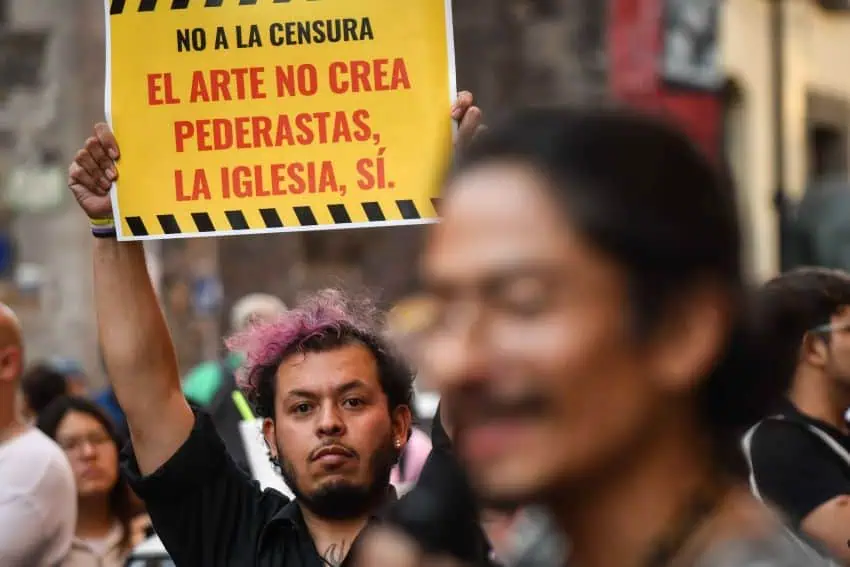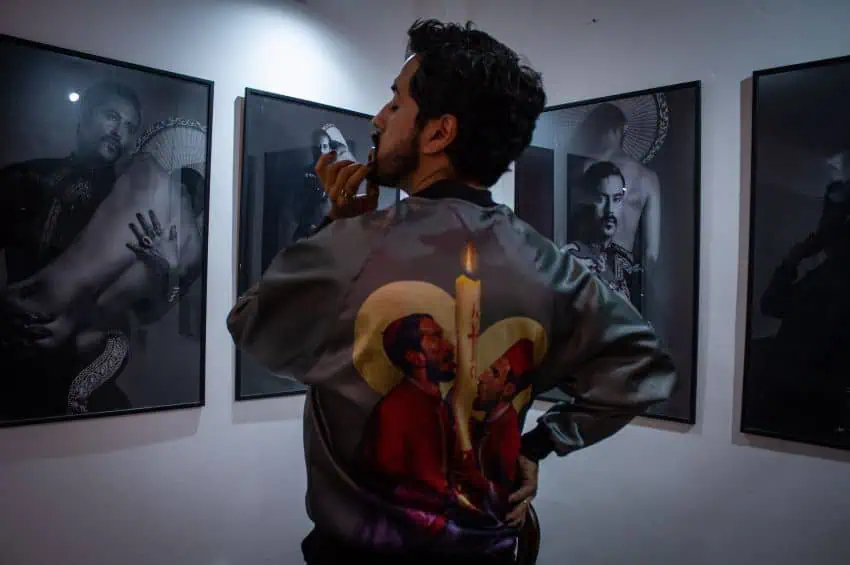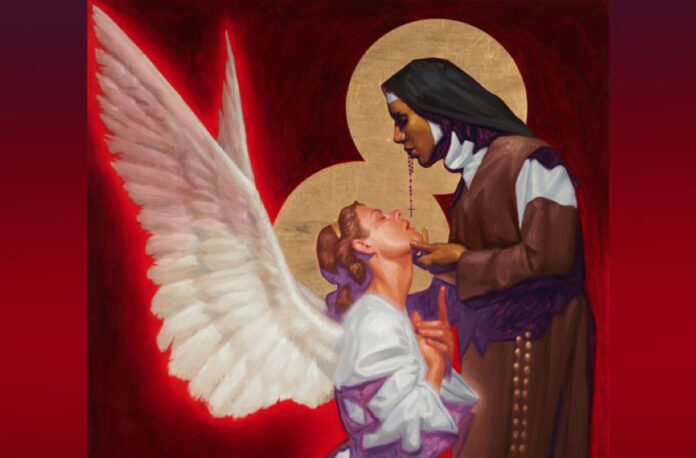A federal judge rejected a request by Mexico’s Association of Christian Lawyers to indefinitely suspend Mexican artist Fábian Cháirez’s exhibit, “The Coming of the Lord,” allowing him to potentially resume displaying his work.
Announced Wednesday, the decision marked a significant victory for artistic freedom in Mexico, following a period of controversy when the same judge made an earlier ruling that suspended the Mexico City exhibit temporarily — a decision which many viewed as an act of censorship.

The temporarily suspended exhibit of nine large oil paintings mixes religious themes with sexual imagery and eroticism — such as two nuns in an intimate pose and a leashed priest on all fours drinking from a goblet on the floor. It opened in Mexico City on Feb. 5.
Judge Francisco Javier Rebolledo Peña, presiding over the Sixth District Court for Administrative Matters, ruled this week that the demand for guarantees made by the Association of Christian Lawyers (AAC) was without merit.
He’s the same judge who ordered the temporary suspension of the exhibit on March 3 — four days before its scheduled closing date — in order to have another hearing.
AAC had accused Cháirez’s work of attacking the Catholic faith, sparking a national debate about the balance between artistic expression and religious sensitivity.
“Censorship in the name of God has returned to Mexico,” wrote Mexican journalist and documentary filmmaker Temoris Grecko in the newspaper Milenio, blaming the shutdown of the exhibit on “a religious association and a conservative judge.”
Cháirez, meanwhile, called for a rally last Friday outside the venue that had been displaying the exhibit, the Academia de San Carlos, a 244-year-old institute formerly known as the National School of Fine Arts. It is part of the National Autonomous University of Mexico (UNAM), which had complied with a provisional injunction last week to close the exhibit within 24 hours.

Drawing support from artists, writers, and human rights organizations, the rally event featured readings of manifestos and statements in support of creative freedom. Among the supporters were the collective known as Catholics for the Right to Decide, an organization dedicated to defending human rights, particularly those related to sexuality and reproduction.
The Mexico City Council to Prevent and Eliminate Discrimination (Copred) also condemned the suspension.
“Religion cannot be used as a weapon to overthrow democratic principles such as freedom of expression,” Copred stated.
Copred emphasized that criticism or artistic representation of religious symbols does not constitute discrimination unless it unjustifiably treats individuals as inferior based on their faith.
Cháirez, 37, is known for provocative works that challenge traditional norms. In 2019, his painting “La Revolución” — which depicted a nude Emiliano Zapata wearing high heels and a pink sombrero — sparked protests when displayed at the Palacio de Bellas Artes. Zapata’s descendants threatened legal action, while LGBTQ+ supporters rallied in the artist’s defense.
Because its scheduled closing date, March 7, had already passed before the suspension was lifted, “The Coming of the Lord” (“La Venida del Señor” in Spanish) has an unclear future.

Cháirez announced this week that he will reopen it, with a date and Mexico City location to be revealed on his Instagram and/or Facebook. He’s also already working on a new project called “The Second Coming of the Lord.”
The case has drawn attention to the role of judicial harassment by conservative groups in Mexico, mirroring tactics used by similar organizations in Spain.
After the court’s decision, Cháirez was pleased.
“It’s a victory for social democracy,” he said in the newspaper El País. “I find it quite gratifying, and I think it’s an achievement for the artistic community and for all of us who defend freedoms.”
